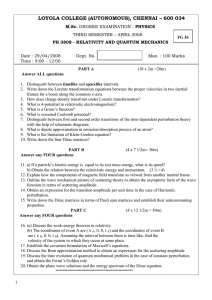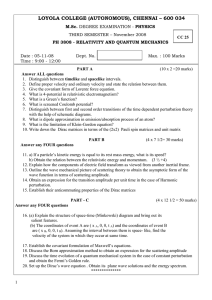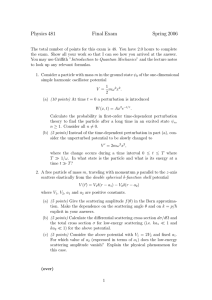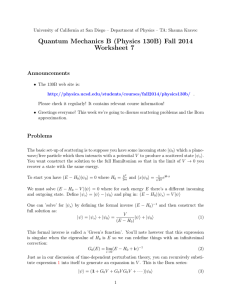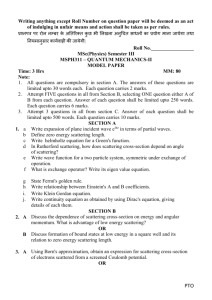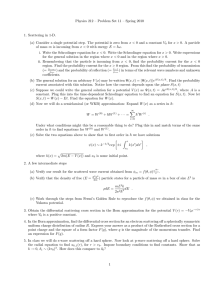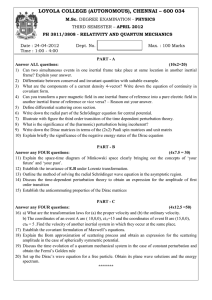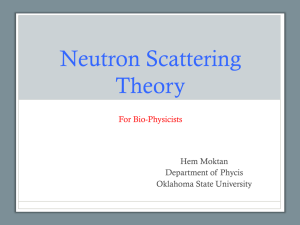ph 3811 / 3808 - relativity and quantum mechanics
advertisement
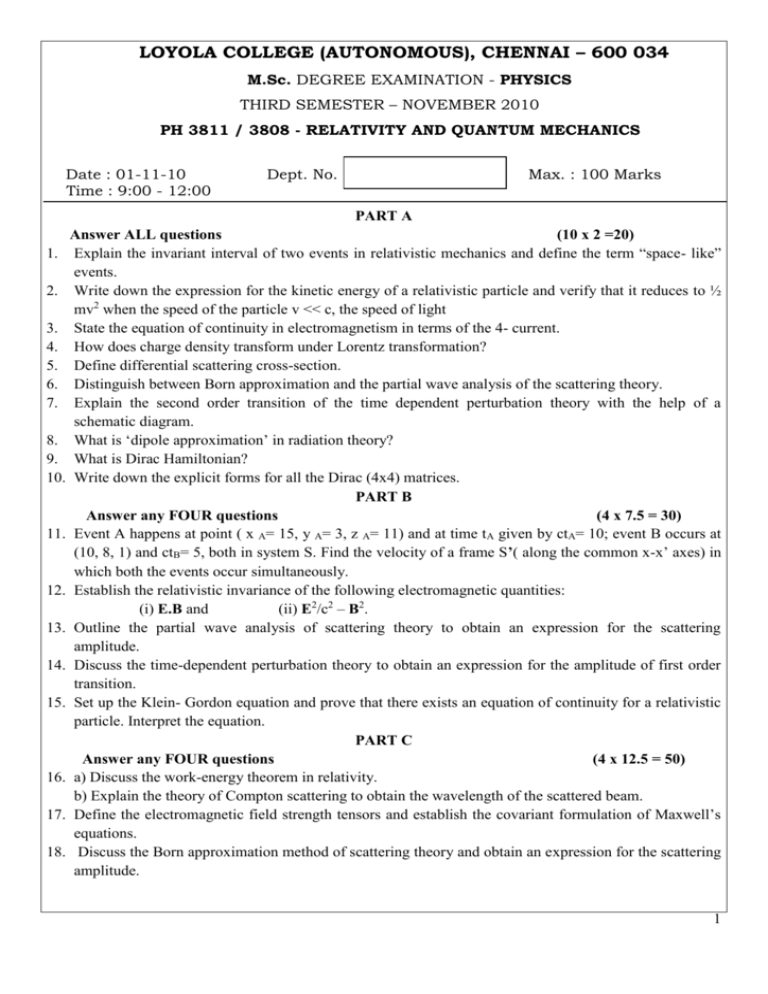
LOYOLA COLLEGE (AUTONOMOUS), CHENNAI – 600 034 M.Sc. DEGREE EXAMINATION - PHYSICS THIRD SEMESTER – NOVEMBER 2010 PH 3811 / 3808 - RELATIVITY AND QUANTUM MECHANICS Date : 01-11-10 Time : 9:00 - 12:00 Dept. No. Max. : 100 Marks PART A Answer ALL questions (10 x 2 =20) 1. Explain the invariant interval of two events in relativistic mechanics and define the term “space- like” events. 2. Write down the expression for the kinetic energy of a relativistic particle and verify that it reduces to ½ mv2 when the speed of the particle v << c, the speed of light 3. State the equation of continuity in electromagnetism in terms of the 4- current. 4. How does charge density transform under Lorentz transformation? 5. Define differential scattering cross-section. 6. Distinguish between Born approximation and the partial wave analysis of the scattering theory. 7. Explain the second order transition of the time dependent perturbation theory with the help of a schematic diagram. 8. What is ‘dipole approximation’ in radiation theory? 9. What is Dirac Hamiltonian? 10. Write down the explicit forms for all the Dirac (4x4) matrices. PART B Answer any FOUR questions (4 x 7.5 = 30) 11. Event A happens at point ( x A= 15, y A= 3, z A= 11) and at time tA given by ctA= 10; event B occurs at (10, 8, 1) and ctB= 5, both in system S. Find the velocity of a frame S’( along the common x-x’ axes) in which both the events occur simultaneously. 12. Establish the relativistic invariance of the following electromagnetic quantities: (i) E.B and (ii) E2/c2 – B2. 13. Outline the partial wave analysis of scattering theory to obtain an expression for the scattering amplitude. 14. Discuss the time-dependent perturbation theory to obtain an expression for the amplitude of first order transition. 15. Set up the Klein- Gordon equation and prove that there exists an equation of continuity for a relativistic particle. Interpret the equation. PART C Answer any FOUR questions (4 x 12.5 = 50) 16. a) Discuss the work-energy theorem in relativity. b) Explain the theory of Compton scattering to obtain the wavelength of the scattered beam. 17. Define the electromagnetic field strength tensors and establish the covariant formulation of Maxwell’s equations. 18. Discuss the Born approximation method of scattering theory and obtain an expression for the scattering amplitude. 1 19. Discuss the time dependent perturbation theory with reference to harmonic perturbation and obtain an expression for the transition probability per unit time. 20. Set up the Dirac’s wave equation. Obtain its plane wave solutions and the energy spectrum ************* 2
